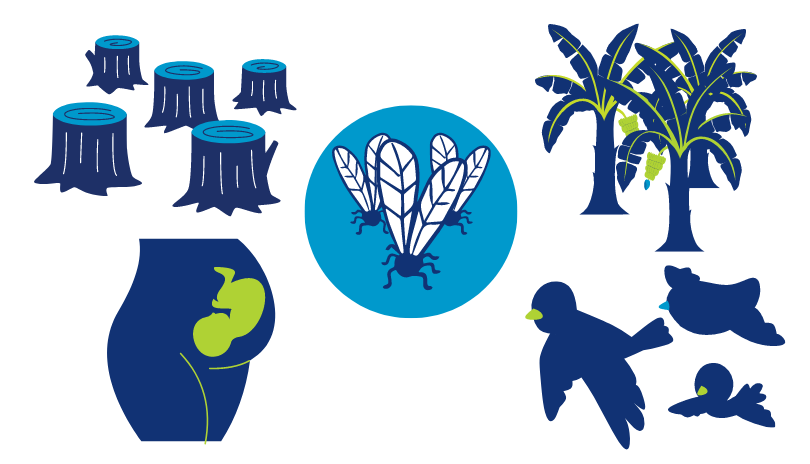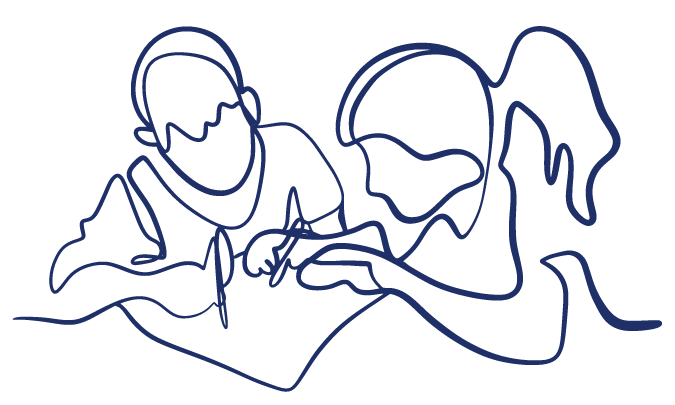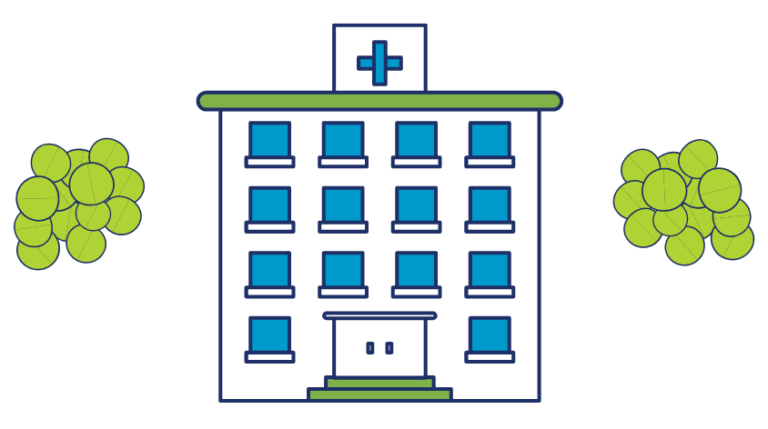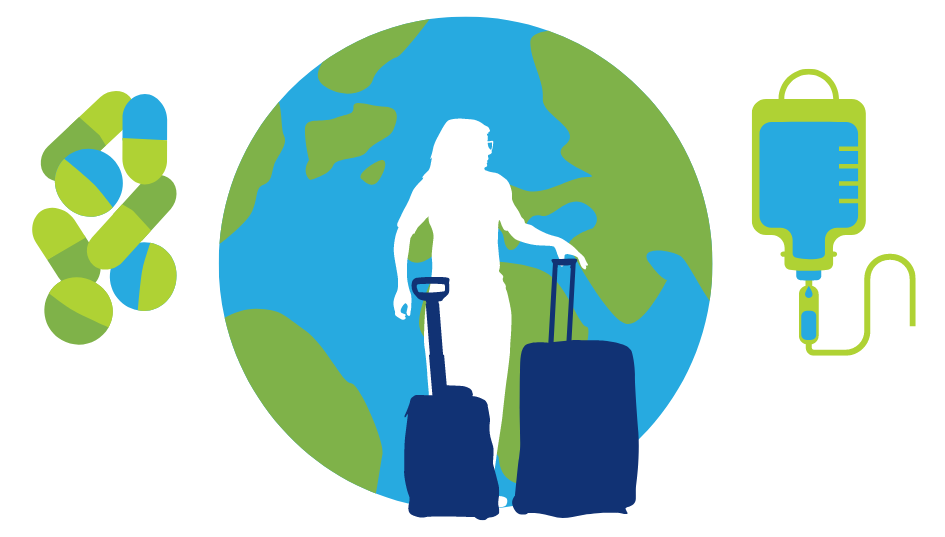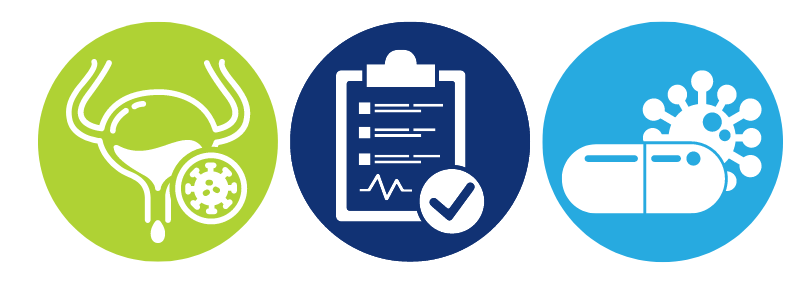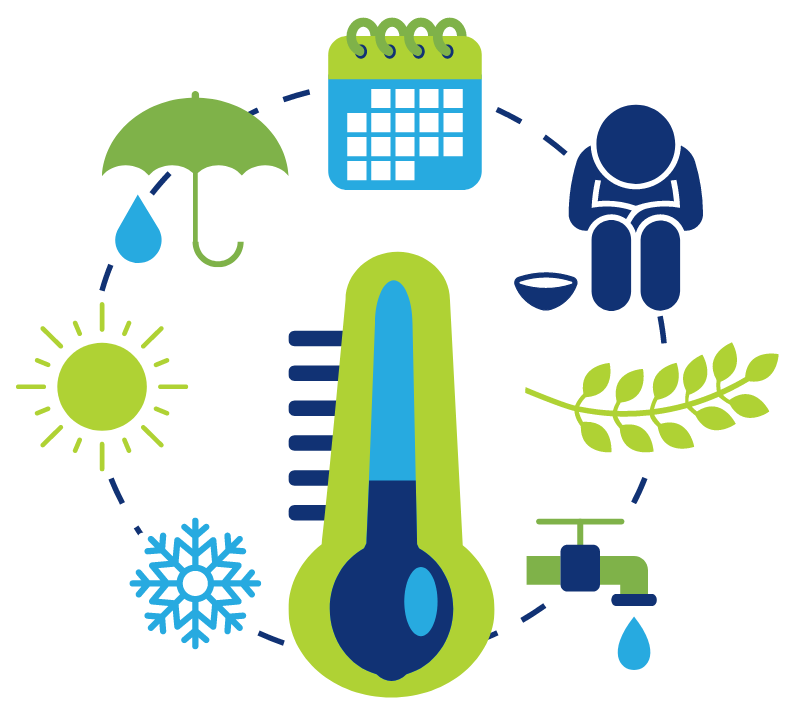
It’s heartbreaking when a drought or flood causes crops in a region to fail, and children to go hungry. Kids can starve to death or endure social, economic, and health problems well into adulthood due to malnutrition.
But what if there was a way to predict when these weather disasters are likely to happen, so governments, aid organizations, and residents could prepare?
A team at the University of Chicago says people could already do this, using one of the best-known weather patterns: the El Niño Southern Oscillation or ENSO.
“ENSO has destabilizing effects on agriculture, economic production, and social stability throughout areas of the global tropics that are teleconnected to it. It has been linked to human health outcomes directly through its effects on vector- and water-borne infectious diseases, as well as indirectly by decreasing agricultural yields and increasing food insecurity and the likelihood of conflict,” they write in a Nature Communications article.
It’s possible to predict this Pacific Ocean-based pattern, says Dr. Amir Jina, an Assistant Professor at the University of Chicago’s Harris School of Public Policy and a Senior Fellow at the Energy Policy Institute of Chicago. In this episode of One World, One Health, listen as Dr. Jina explains how people could use predictions about El Niño years to get ahead of some of the forces that make children go hungry.
Maggie Fox 00:00
Hello and welcome to One World, One Health where we take a look at some of the biggest problems facing our world. I’m Maggie Fox. This podcast is brought to you by the One Health Trust with bite-sized insights into ways to help address challenges, such as infectious diseases, climate change, and pollution. One Health recognizes that everything on this planet — the animals, plants and people, and the climate and environment — are all linked.
It’s official now, 2023 has been an El Niño year, and people are talking about what that means in terms of a warm winter snowfall and even fisheries. El Niño is one manifestation of the El Niño-Southern Oscillation (ENSO), and ongoing pattern of changes in the movement of water in the Pacific Ocean, which, in turn, affects air circulation and weather, harvests, and disease spread. Weather, of course, affects day-to-day living, but it also strongly affects crops. And now a team of researchers has found they can forecast out even further from where the world is in the El Niño or ENSO pattern to whether children will be able to get the nourishment they need.
In this episode, we’re chatting with Amir Jina, an Assistant Professor at the University of Chicago’s Harris School of Public Policy and a Senior Fellow at the Energy Policy Institute of Chicago. His team thinks it’s possible to develop what they call a hunger early warning system to help get out ahead of malnutrition in some of the most vulnerable people and places. Amir, thanks so much for joining us.
Amir Jina 01:45
Thank you for having me.
Maggie Fox 01:46
Can you tell us a little bit about what the value is of forecasting in terms of what might happen in terms of health?
Amir Jina 01:56
Let’s talk about what the El Niño-Southern Oscillation actually is and what it does. So, I think the value is really enormous. And it’s not that the forecasts of ENSO or forecasts of other long range type of weather or climate phenomenon are not being listened to. It’s just that I don’t think we’ve made a shift as a society yet to thinking about anticipatory action or early warning in the way that would really benefit the most people.
So, one of the ways that it can help here is just knowing, you know, if in an upcoming year, what places are maybe going to be more at risk of drought or a flooding or a food loss, and try to make sure all of the actions we would normally take after the fact we start to see a food crisis emerge, if we start to see flooding occur. Then the easiest way I think, to think about what we would do is we start to place some of our food aid in locations we know to be more vulnerable.
We start to place some of our rebuilding and response tools in places that we know to be more vulnerable. And I think there’s a very kind of mild readjustment to how we allocate our resources globally as an international community that can be responsive to forecasts, (and) that could really start changing people’s lives on the ground. The El Niño is a phenomenon that happens every four to seven years or so. And it’s the warm episode in the Pacific Ocean.
So, there’s a big warm pool of water, which is normally in the Pacific and during an El Niño year that the surface area of this warmer water spreads out across the equator. It spreads out from Australia all the way to South America. Normally, it has kind of kept closer to Australia. The overall energy in the ocean isn’t changing. But because the surface temperature is getting warmer, there’s a lot more evaporation that goes up into the atmosphere. So, there’s a lot more energy getting into the atmosphere. And that just starts to affect weather patterns.
And the fascinating thing about it is it doesn’t just affect them locally. By pumping all of this heat and water vapor into the atmosphere, it starts to affect the circulation in the higher, the upper parts of the atmosphere, which means that really remote parts are what we would call teleconnected parts of the world start to be affected. So, you can have effects locally in Peru or in Australia. But you can also have effects in northeastern Brazil, which might be susceptible to drought. You can have effects in East Africa and India. In fact, one of the ways this was discovered as a global phenomenon, apart from the local effects that would happen in South America, hence the Spanish name, was actually the British colonial administration of India trying to understand what was happening with the monsoon and why it’s so variable each year.
So, that’s what happens maybe an El Niño every four to seven years or so. And then there’s the opposite effect called the La Niña, where instead of putting up extra heat in the atmosphere, the La Niña means there’s less heat going up into the atmosphere. And we kind of see opposite effects — parts of the world get colder, parts of the world get less rain or more rain depending on what the teleconnection is. And this thing is huge.
It’s one of the main drivers of variability in the global climate from here to here. It’s affecting between 30 and 50 percent of the landmass on the planet. So, this is really something which drives a lot of the changes we see. And key part of it is we can actually predict it pretty far out in advance.
Maggie Fox 04:56
And then how does this affect food production in different parts of the world above and beyond the obvious, of course?
Amir Jina 05:02
Well, so I mean, as you say, the obvious part here is, if you get more water or less water, it’s going to affect how well crops grow. But also particularly higher temperatures and average versus lower temperatures and average also affect crops. We’ve learned from a lot of research that the response of crops to temperature and precipitation is what we call non-linear.
Basically, there tends to be threshold effects sometimes. So, we might have a crop, which is growing very well, at a certain temperature and just a couple of degrees more, or a couple of days spent at a couple of degrees hotter than average might cause that yield to drop off really quickly. And so we can see crops being quite sensitive to these threshold effects in temperature, particularly, but also in terms of overall water availability.
This affects crops locally. It makes it harder to grow when this, on average, higher temperature is in an already hot place. It makes them easier to grow. And some crops actually are better off in places which have higher than average temperatures in a relatively cool place. Crops need that extra temperature and they grow well. So, we start to see this difference — some crops growing better in some parts of the world, some crops going worse, the same with the water availability. El Niño causes or the whole El Niño-Southern Oscillation cycle, it causes different changes to precipitation in different locations. In some places, an El Niño means rainfall decreases, in some places, that means it increases.
Again, we’re going to see this difference in crops. So, it’s this kind of global reallocation in where it’s easier to grow crops versus not. And that’s going to affect some places locally. Some people are going to get benefits and many of the places we look at in our research are places that are already hot where the crops are going to suffer more losses. Globally speaking as well, in addition to the local effects, this has an effect on food supply. This affects prices.
If we have extreme heat in wheat growing areas of Russia, or fires in those same areas and there’s less of a global supply, this affects food prices. So, you could be in a situation where not only does your local food supply suffer, but also prices are increasing because the global food supply is interrupted to some extent that makes it harder for you to get the nutrition you need.
Maggie Fox 06:59
And why care about this problem of undernutrition if there’s just one year of crop failure, and kids are a little hungry one year? Can’t you make up for it later?
Amir Jina 07:09
There’s been a lot of research recently, which has shown that particularly for young kids, the first two, especially, but the first five years of life are very important. Anything which harms you in those first couple of years of life, it’s not necessary that it can just go away if your food comes back the next year.
So, in the worst-case scenario, it’s a very vulnerable population. Some kids might die. Those kids, of course, never come back. And that’s going to be one of the biggest problems here. But even kids who survive these shocks that they experienced in the first few years of life can hang around with them for the rest of their lives.
And we’ve seen a lot of research showing that this is the case. People can have reduced earnings, they can have reduced health status, they can have health complications later in their life. There’s famous results on losses, IQ losses to physical development of kids, they tend to be shorter and stunted for longer in their lives. All of those things are effects that we can deal with in the moment. And if we don’t, they might hang around for decades.
Maggie Fox 08:02
So, I think that’s the really important part of your research is that, you know, obviously, if the weather is terrible and a crop fails, there’s going to be child malnutrition. But these are global interconnected and not necessarily obvious effects.
Amir Jina 08:16
Yes. And I think that’s part of the point we’re trying to make. So, one of the things which inspired this area of research was that we heard some quotes from the heads of the World Bank and the World Food Program, and the WHO saying — some countries were maybe failing on their child nutrition goals. Particularly, we heard some of the statements after a large El Niño in 2015.
And a light bulb went off in our head saying, “well, I can look and name and shame some countries and say, you’re not doing enough for child nutrition but if I’m talking to places in the Horn of Africa, who were experiencing a La Niña in that year, it might be that they were putting the right policies in place, but they just don’t have the resources because this external globally coordinated weather phenomenon made it more difficult for them to reach their policy goals.”
So, this idea of thinking about this global interconnectedness, realizing that the local conditions on the ground in one country might not be fully representative of all of the stress and extra shocks that they’re facing in a year, and that those shocks are something which are distributed around by the weather and the climate, trying to just focus solely on what the country can do without any measure or solid debate, the international and global coordination aspect, I think, starts to become a difficult problem to face. And it’s a difficult point of view to maintain, I think, once we realize there is this global interconnected problem affecting food supply.
Maggie Fox 09:33
So, you found that you can predict some of these effects. How far out can you do that?
Amir Jina 09:39
So, what we do is we look at historically what has happened to food supply and to nutrition status of children. We compile surveys from different countries. We end up getting close to 100 surveys conducted around the world over the last few decades, which measure children’s outcomes, and we look at what has happened to nutrition, (including the) measure of severe malnutrition, which is a child’s weight-for-age and how that changes in the years of an El Niño. And we do a lot of statistics here to try and make sure this is robust. And we control for local factors that differ across country and all the things that we’ve need to do to try and identify this as more than just a correlation in the data, but really trying to understand the causal effect here.
So, we measure that relationship, then what we can do with that is, we can look at how that differs across space, we can look at how it differs across time, we can look at how it differs based on whether you get more rainfall or less rainfall. I think that part was key in us understanding this is really about food supply, not losses, not about something else happening. Conflict may be something else that might be driven by El Niño that there’s something here potentially about food, food growing in a local place.
And then what we can do is, once we have this relationship estimated from the data, we can take some kind of machine learning approaches and say, “well, what if we hold off some years of data for which we have data and we can predict what would have happened in those and then verify them against real data” and say, “oh, we’re actually seeing this picture emerge. It turns out, this is a true relationship, and we can predict it happening —-.” And then one of the things we can do with that is say if this is identifying a real relationship, why don’t we look at what happens with a forecast of how bad an El Niño will be.
Plug that into our, what we now have as this kind of model for an impact forecast almost, plug it in and say, “well, what could the effect be when we’re sitting here six months from now, seven, (or) eight months from now.” But next year, looking back, if nothing changes from what we’ve been doing in the past, we might see these types of effect. So, we’re forecasting based on this historical relationship we observed in the data. And then we’re able to say, “if we don’t do anything different than what we’ve done before, this is how bad it could be.”
And we tried to put that up as a warning sign to say, “if we know that we don’t change our behavior, this is how bad it could be, (and) what are the behaviors we can change to make sure this is not that bad.”
Maggie Fox 11:50
And what are some of those changes that governments can do?
Amir Jina 11:53
So, I think one of the things here is this mind shift that I mentioned, about thinking about anticipatory action, and incorporating forecasts into decision-making to help coordination of food aid, coordination of humanitarian assistance that’s already happening in some cases, but I think it’s getting much less funding and much less attention than it needs to.
In fact, last year, at the Conference of Parties that climate negotiations for the main Climate Change Treaty, the Secretary General of the United Nations hold for a program under the heading of “Early Warning for All”, not specifically thinking about food supply, but thinking about every way in which we can get early warnings, whether it’s a few days ahead for a hurricane, or a typhoon or tropical cyclone, making sure we have the ability to give that information to people.
But I think it includes also these longer term — 6-7 month out forecasts — like you can make for an El Niño and try and say, “let’s get the early warning to people so that one, they can make the decisions they need to make.” So, a farmer on the ground knows conditions might be good this year, or they might not be as good as they are in a typical year. And they can take some autonomous kind of changes to what they might invest in for their crops. I think it also means we need to coordinate our humanitarian response more.
And you know, the World Food Program is already investing in this, in small doses in different parts of the world and doing some really interesting work with the international community yet hasn’t realized that there’s a massive benefit here if we commit the money towards this. I think one of the other things then is I’m a researcher and so, I was up to say more research is a good thing. But I think something we need to do here is think a little bit less about purely forecasting for forecast sake, (and) not have it as a scientific problem of what’s the physics, what’s happening in the atmosphere, that kind of stuff, but try and translate it a bit into impact forecasts — what are the consequences of the forecasts that we’re seeing. And I think that’s a really important thing to try and change.
That’s an excellent way to get messages out to people. I can probably suggest some policies for what you could do in terms of allocating funds, allocating food aid, and making sure that all your disaster relief stocks are in the right place. But someone in a country affected is dealing with has been dealing with these things for decades. Once they get the early warning, they might have a much better picture of the policies they need if we can translate that forecast into something that people can act up.
In the context of climate change, it becomes particularly important as well, not just for El Niño forecasts, but what we learn partly through our research on children’s nutrition, where we’re seeing potentially millions of children are falling into this severe category of undernutrition every time there’s an El Niño. And this is something that’s been happening through history. We have data for decades looking at this. And we calculated numbers based on comparing the 2015 El Niño to the first year of COVID.
And it looked like the 2015 El Niño from our data and from estimates from the WHO about COVID, there’s more children pushed into severe undernutrition from this repeating anticipated cycle of ENSO than there was from this once in a lifetime, once in a generation, pandemic which had lots of effects on food supply. So, we’re thinking, “well, if this is something we know, we can deal with, why can’t we fully act upon that.” And I think we’re in a situation now where with climate change and thinking about that, it’s exposing that we’re not fully adapted to the current variability of climate change.
This effect is kind of persisted for a long time. And so if we want to think about how the variability of the climate is going to change into the future, it’s not just ENSO forecasts but all kinds of forecasts actually help people deal better with the variability they’re facing as a lot of projections are for that variability to increase. That mind shift towards saying, “let’s deal with the affronts from the environment, the variability of the environment that you’re facing now,” in order to be able to say, “well, if that variability goes up in the future, let’s make sure we have the tools to deal with it then as well.”
I think we’re now at the point of thinking about this in the context of climate change, where it’s becoming more and more salient as we realize that a lot of the poor countries in the world are going to be facing some pretty substantial climate change and adaptation becomes a priority. This is something which I think naturally becomes a big priority for adaptation.
Maggie Fox 15:48
Amir, thank you so much for joining us.
Amir Jina 15:51
Thank you very much.
Maggie Fox 15:53
Listeners, if you enjoyed this podcast, please share it. You can learn more about this podcast and other important topics at onehealthtrust.org. And let us know what else you’d like to hear about at [email protected]. Thanks for joining us.
Guest

Dr. Amir Jina is an Assistant Professor at University of Chicago’s Harris School of Public Policy, researching how economic and social development is shaped by the environment. Amir uses methods from economics, climate science, and remote sensing to understand the impacts of climate in rich and poor countries, and has conducted fieldwork in India, Bangladesh, Kenya, and Uganda. Amir is a founding member of the Climate Impact Lab, an interdisciplinary collaboration estimating the costs of climate change to society all over the world with state-of-the-art empirical methods. Amir received his PhD in Sustainable Development and MA in Climate and Society from Columbia University, BAs in Mathematics and Theoretical Physics from Trinity College, Dublin, and previously worked with the Red Cross/Red Crescent in South Asia and as a high school teacher in Japan.
Credits
Hosted and written by Maggie Fox
Special guest: Amir Jina
Produced and edited by Samantha Serrano
Music composed and sound edited by Raquel Krügel
Transcript edited by Dipyaman Sengupta

